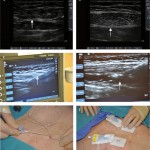Evolution of surgical training methods: the new class
Sir,
I am writing this from a trainee viewpoint.
I was delighted to read the articles by Khan et al. [1] and Elsamra et al. [2]. Both articles highlight how much the role of the surgical trainee has changed in this day and age.
Surgery has always been about precision, control and patient safety. It was interesting to note, with a new generation of trainees, the requirement for immediate information is there. Knowledge is very literally at our fingertips. Making use of modern web-based tools, in the same way, much of surgical training has become standardised, with the arrival of the ISCP log book, and more recently, the robotic surgery curriculum, which was much welcomed. With these tools, we can easily self-audit our practice to see what our learning curve is. However, additional pressures are now put on surgeons with the advent of published surgical outcomes. In some ways, this is both a help and a hindrance to a trainee. It helps that you can easily monitor your learning curve and continuously readjust your technique and skills accordingly. It is a hindrance that training opportunities may be further restricted as a result. This is more so for open surgery, which may result in less training.
Surgery is a speciality built on apprenticeship. However, in the modern world, the wealth of information available to trainees is vast. Trainees can learn via social media and link to conferences around the world. This emphasises why live cases are central to training. In a busy hospital, there may not often be time for a trainee to be taken through a procedure step-by-step. With live surgery supplementing training, the trainee already knows what to expect. In this age, we are very lucky. Not only can we read the theory behind the operation, but we can then view the procedure on the web and complete simulation training to improve our surgical skills, prior to approaching any patient in hospital. As a result, we can perfect our skills, even before performing the first operation.
Despite all the above, what still remains central and vital to surgery, is the master–apprentice relationship. With all the texts in the world, and all available resources, nothing can teach you quite so much as the voice of experience. To finish off, I know a lot of comments have been made about the BJUI being a journal that nurtures the younger generation, and a number of negative comments made as a result. As one of the younger generation I would like to say, it is nice to have a journal that listens and continues to support surgical training and education.
Sanchia S. Goonewardene* and Raj Persad**
*University of Warwick, **Southmead Hospital Bristol
References
- Khan N, Abboudi H, Khan MS, et al. Measuring the surgical ‘learning curve’: Methods, variables and competency. BJU Int 2014; 113: 504–508
- Elsamra SE, Fakhoury M, Motato H, et al. The surgical spectacle: a survey of urologists viewing live case demonstrations. BJU Int 2014; 113: 674–678


